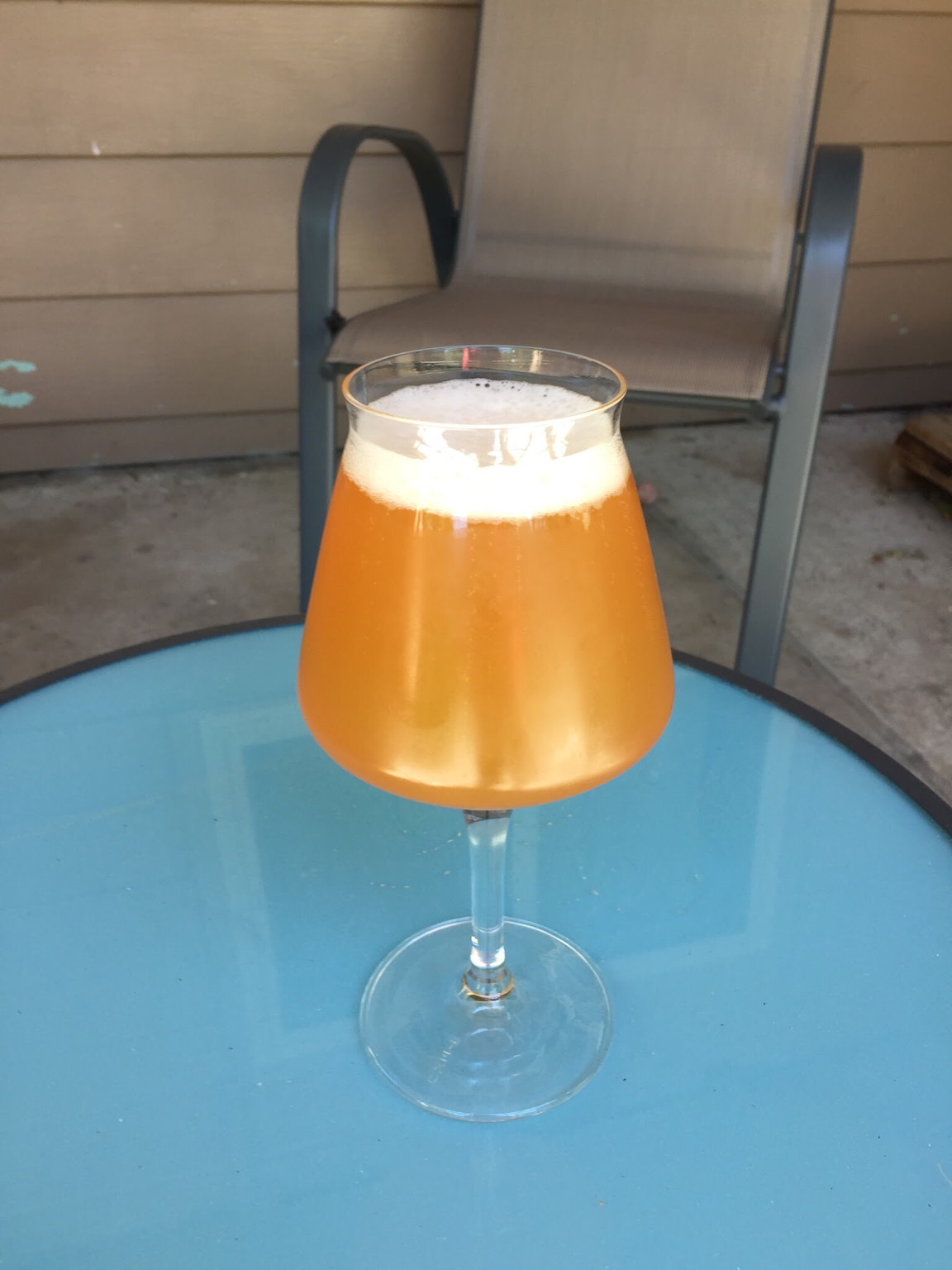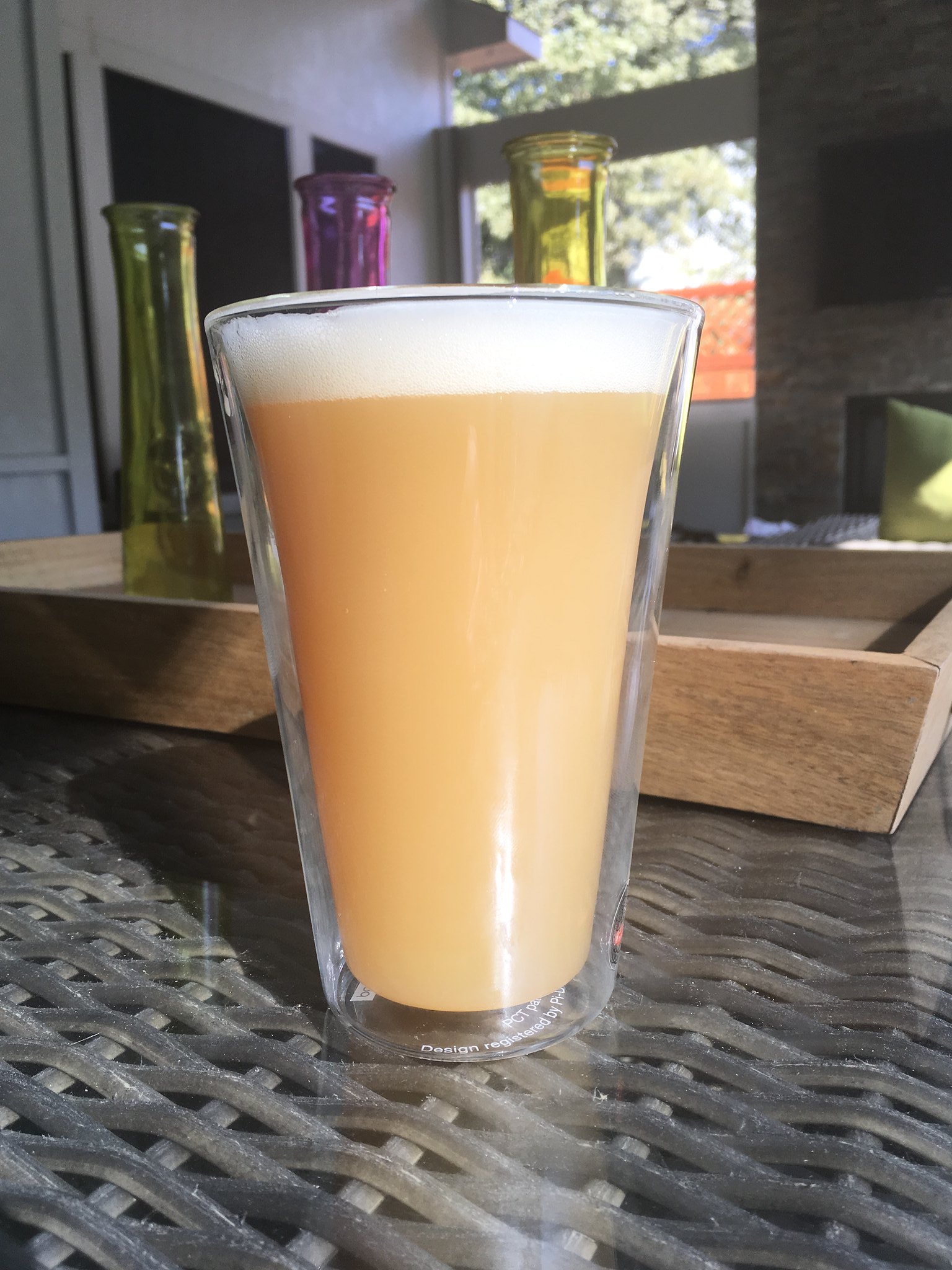I was looking around on "National Homebrew Association" website and came across Weldoworks Juciy Bits NEIPA recipe. Has anyone tried brewing this beer? Reason I ask is I was looking at brewing a similar recipe with a couple minor tweaks to the grain and hop bill, but when I use their hop addition schedule BeerSmith estimates an IBU level of 103 which is much much higher than the 45 listed in the article. My thought was after to flameout to cool the wort down to 180F, turn off the chiller and then start the whirlpool timer from there with the hop additions as shown below to try and reduce the hop utilization. Any thoughts?
https://www.homebrewersassociation.org/homebrew-recipe/weldwerks-brewing-juicy-bits-neipa/
Boil Size: 8.41 gal
Post Boil Volume: 6.72 gal
Batch Size (fermenter): 5.70 gal
Bottling Volume: 5.30 gal
Estimated OG: 1.064 SG
Estimated Color: 4.4 SRM
Estimated IBU: 103.0 IBUs
Brewhouse Efficiency: 78.00 %
Est Mash Efficiency: 88.3 %
Boil Time: 90 Minutes
Ingredients:
------------
Amt Name Type
# %/IBU
4 lbs 8.0 oz Briess Pilsen (1.2 SRM) 36.4 %
4 lbs 8.0 oz Pale Malt, Maris Otter (3.0 SRM) 6.4 %
1 lbs Oats, Flaked (2.5 SRM) 8.1 %
12.0 oz White Wheat Malt (2.4 SRM) 6.1 %
8.0 oz Cara-Pils/Dextrine (1.5 SRM) 4.0 %
8.0 oz Wheat, Flaked (2.0 SRM) 4.0 %
4.0 oz Honey Malt (25.0 SRM) 2.0 %
6.0 oz Corn Sugar (Dextrose) (0.0 SRM) 3.0 %
0.33 oz Magnum [14.00 %] - First Wort 90.0 min 16.1 IBUs
0.33 oz Citra [12.50 %] - Steep/Whirlpool 40.0 min 11.2 IBUs
0.33 oz El Dorado [15.70 %] - Steep/Whirlpool 40 min 14.1 IBUs
0.33 oz Simcoe [13.50 %] - Steep/Whirlpool 40.0 min 12.1 IBUs
0.66 oz Citra [12.50 %] - Steep/Whirlpool 30.0 min 9.4 IBUs
0.66 oz El Dorado [15.70 %] - Steep/Whirlpool 30 min 11.8 IBUs
0.66 oz Simcoe [13.50 %] - Steep/Whirlpool 30.0 min 10.2 IBUs
1.0 oz Citra [12.50 %] - Steep/Whirlpool 20.0 min 5.4 IBUs
1.0 oz El Dorado [15.70 %] - Steep/Whirlpool 20.0 min 6.8 IBUs
1.0 oz Simcoe [13.50 %] - Steep/Whirlpool 20.0 min 5.8 IBUs
1.0 pkg London Ale III (Wyeast Labs #1318) [124. Yeast
https://www.homebrewersassociation.org/homebrew-recipe/weldwerks-brewing-juicy-bits-neipa/
Boil Size: 8.41 gal
Post Boil Volume: 6.72 gal
Batch Size (fermenter): 5.70 gal
Bottling Volume: 5.30 gal
Estimated OG: 1.064 SG
Estimated Color: 4.4 SRM
Estimated IBU: 103.0 IBUs
Brewhouse Efficiency: 78.00 %
Est Mash Efficiency: 88.3 %
Boil Time: 90 Minutes
Ingredients:
------------
Amt Name Type
# %/IBU
4 lbs 8.0 oz Briess Pilsen (1.2 SRM) 36.4 %
4 lbs 8.0 oz Pale Malt, Maris Otter (3.0 SRM) 6.4 %
1 lbs Oats, Flaked (2.5 SRM) 8.1 %
12.0 oz White Wheat Malt (2.4 SRM) 6.1 %
8.0 oz Cara-Pils/Dextrine (1.5 SRM) 4.0 %
8.0 oz Wheat, Flaked (2.0 SRM) 4.0 %
4.0 oz Honey Malt (25.0 SRM) 2.0 %
6.0 oz Corn Sugar (Dextrose) (0.0 SRM) 3.0 %
0.33 oz Magnum [14.00 %] - First Wort 90.0 min 16.1 IBUs
0.33 oz Citra [12.50 %] - Steep/Whirlpool 40.0 min 11.2 IBUs
0.33 oz El Dorado [15.70 %] - Steep/Whirlpool 40 min 14.1 IBUs
0.33 oz Simcoe [13.50 %] - Steep/Whirlpool 40.0 min 12.1 IBUs
0.66 oz Citra [12.50 %] - Steep/Whirlpool 30.0 min 9.4 IBUs
0.66 oz El Dorado [15.70 %] - Steep/Whirlpool 30 min 11.8 IBUs
0.66 oz Simcoe [13.50 %] - Steep/Whirlpool 30.0 min 10.2 IBUs
1.0 oz Citra [12.50 %] - Steep/Whirlpool 20.0 min 5.4 IBUs
1.0 oz El Dorado [15.70 %] - Steep/Whirlpool 20.0 min 6.8 IBUs
1.0 oz Simcoe [13.50 %] - Steep/Whirlpool 20.0 min 5.8 IBUs
1.0 pkg London Ale III (Wyeast Labs #1318) [124. Yeast
Last edited:




